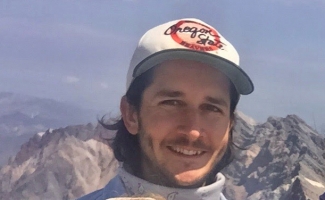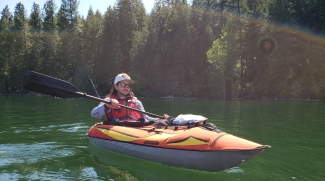Will Mayfield began working with the DTC as a co-lead on the Data Assimilation (DA) team. His project focused on the Gridpoint Statistical Interpolation (GSI) software. However, he recently transitioned into a co-lead for two projects: the Unified Forecast System (UFS) Short Range Weather (SRW) App support as well as Ensembles Testing and Evaluation. Successfully executing these roles demands a balance of software support, investigative science work, and project management. He has also collaborated on a variety of other projects including statistical evaluation of observation operators for DA, assessing GPS-RO observation errors, and testing stochastic physics schemes in the UFS. Staying ahead of the vast array of software and approaches used in numerical weather prediction is both challenging and thrilling to him, but the best thing is being part of all the fresh work being done with emerging tools.
Will’s life started in Stephenville, a small city in north-central Texas, where he grew up and eventually attended Tarleton State University. He majored in English and Languages (and then earned an MA), and also studied mathematics. His first project in computational modeling was lunar-forming giant impact simulations using particle approaches—watching the particles coalesce into a moon was fascinating. He enjoyed both the arts and humanities as well as sciences, but he ultimately chose to pursue a career in math and science. This decision led to his grad school experience at Oregon State University in Corvallis where he worked in Applied Mathematics and discovered his interest in the geoscience disciplines, including research on tsunami forecasting and uncertainty quantification for coastal hazards.
Although he didn’t know much about meteorology at the time, he’d always been interested in large-scale physical models. So joining the DTC and learning about weather forecasting was a terrific opportunity to dive into his newly discovered pursuit. Will says, “The atmosphere is such an immense, dynamic system that I’m constantly in awe of all the detail that goes into making good forecasts, and how creative the solutions are to all the problems we encounter.”
As much as he enjoys his work for the DTC, it’s possible that his most rewarding role is mentorship. This summer he was lead mentor to a student as part of the NESSI (NCAR Earth Science System Internship) program. It was a fun and rewarding experience that he hopes to have again in the future. He also participates in the NCAR mentoring program. Through his DTC roles, he’s also hosted a number of visitors, including Ivette Hernández Baños, a PhD student from Brazil, and Chong-Chi Tong, a researcher from the University of Oklahoma Center for Analysis and Prediction of Storms (CAPS) who visited on site at NCAR for October 2021. Both were great collaborations during which he supported their work, and in turn, drew invaluable experience from theirs as well.
So, what does his life outside of work look like? Like most of us in Colorado, he hikes, bicycles, backpacks/camps, swims in lakes, occasionally fishes, and reads fiction of all kinds. He recently stepped into the popular pickleball fray. As for bucket-list pursuits, he’d like to return to Big Bend National Park to watch the Geminids meteor shower because it was cloudy the last time he tried. As for travel wishes, why not Kamchatka? It holds a special place in his family history because it was the most hotly contested location in family games of “Risk.” For those of you who have never heard of this board game, it’s a game of strategy, diplomacy, conflict, and conquest. Evidently, it’s the sort of game that stirs competition between family members that forges indelible memories.

